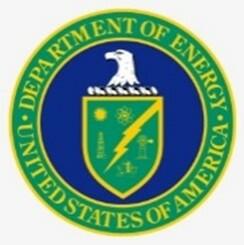Harnessing the Future of Power Electronics: DOE Roadmap


As an advocate for innovative power solutions, I continually explore global trends and standards that can lead us toward a more energy-efficient future. Today, I want to share insights from the U.S. Department of Energy's (DOE) recent series of listening sessions—a pivotal step in shaping a power electronics roadmap that aligns closely with our goals at Power Integrations.
The DOE’s ambitious agenda sets a course to cut carbon emissions by 50% by 2030 and achieve net-zero carbon emissions across all sectors by 2050. Such goals demand groundbreaking advancements in power electronics, which lie at the heart of energy creation, distribution, and utilization. Here’s how these developments resonate with our commitment to reducing energy consumption through advanced power conversion technologies.
The Innovation Ecosystem and Its Opportunities
The DOE's power electronics innovation ecosystem offers a structured framework, spanning applications from renewable sources like solar and wind to essential infrastructure in transportation and buildings. This comprehensive approach not only fosters research into cutting-edge technologies, including wide bandgap (WBG) semiconductors, but also addresses manufacturing complexities and costs.
Working Groups: A Closer Look
The DOE has structured its efforts into four distinct working groups (WGs), each pivotal to our shared goals of advancing power electronics technology:

- WG1: Materials and Active Components Led by Sandia National Laboratories, this group dives deep into the science of semiconductors. They explore devices, doping, substrates, processing, epitaxy, and defects, with a focus on wide bandgap (WBG) technologies like silicon carbide and gallium nitride. Their research is crucial for developing components that drive the efficiency of power systems, closely aligning with our goals of minimizing energy consumption.
- WG2: Passive Components and Packaging Spearheaded by the National Renewable Energy Laboratory, WG2 focuses on enhancing power semiconductor packages and their components, such as capacitors and magnetics. Their work aims to optimize half-bridge power modules and reduce manufacturing costs and time, paralleling our initiatives to improve power conversion efficiency and system reliability through innovative packaging.
- WG3: Systems and Applications Also led by Sandia National Laboratories, this group tackles the integration of power electronics into broader systems and applications. From renewable energy to efficient storage and electrification of transport, WG3's projects align with our efforts to provide scalable and modular power solutions that support a carbon-neutral grid.
- WG4: Techno-Economics and Lifecycle Analysis This group, guided by the National Renewable Energy Laboratory, assesses the economic impacts and sustainability of power electronics innovations. They use tools like bottom-up cost modeling and consider embodied energy and carbon, which is essential for understanding the long-term benefits and feasibility of new technologies, reflecting our commitment to sustainable product development.

Through this strategic roadmap, the DOE anticipates and addresses the evolving needs of energy systems and the advanced power electronics required to sustain them. This initiative not only identifies key opportunities, trends, and challenges but also emphasizes essential technological goals to achieve decarbonization.
At Power Integrations, we are committed to enhancing efficiency and reducing carbon emissions through innovative power conversion technologies. Engaging with the DOE’s roadmap represents a proactive stance in shaping industry standards and practices. Our active involvement not only informs our strategies but also positions us as a pivotal player in driving the future of energy efficiency.





